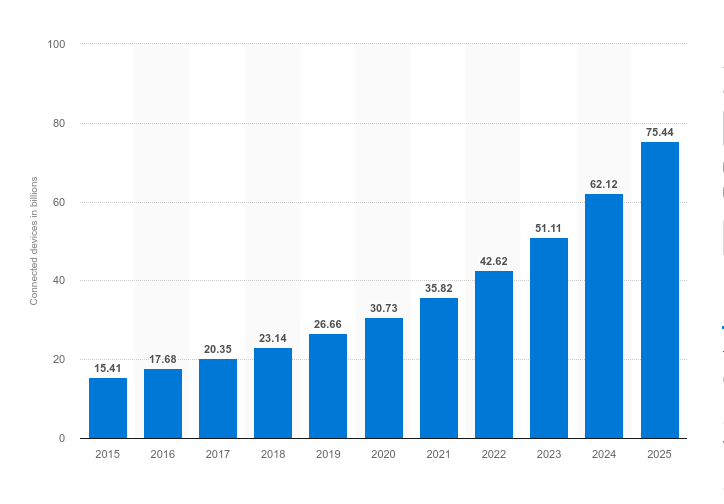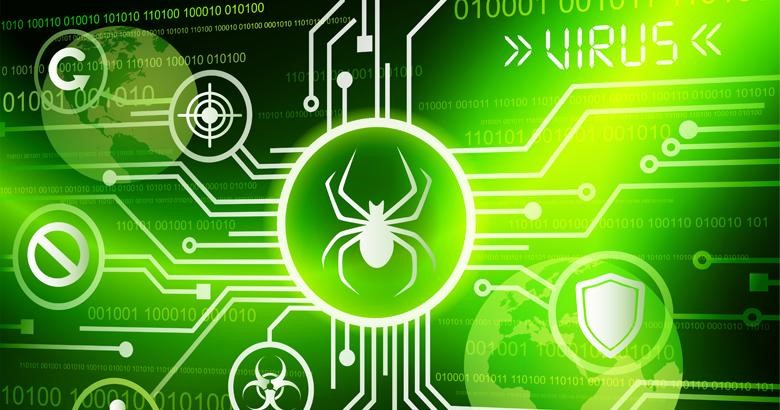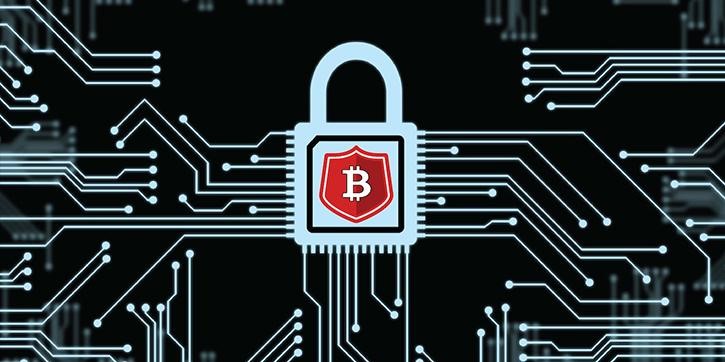Artificial Intelligence (AI)
Internet of Things (IoT) and It’s Security Provocations You Must Know!
IoT is the next industrial revolution which impacts and transformed businesses into different ways. Read about the Internet of Things (IoT) and its security provocations.

These days IoT turned into the most known buzzword which impacts businesses in various ways. There are growing difficulties in the advancement of IoT gadgets learning the top-notch security provocations in the IoT ecosystem: that you must know.
The IoT market size will reach 243,000 million by the end of 2020. The growth and popularity of IoT-connected devices leading to a rise in the demand for IoT App development with its generous share of concerns and security challenges, which cannot be ignored.
Moreover, Businesses compete with each other to get the newest device first in the hands of their customers. Surprisingly few security issues are linked with data access & management, and also with the IoT gadgets themselves.
Unlike standard web security, IoT offers plenty of unique provocations vis-à-vis protection. Necessarily, as the information protocols, standards, and device capacities are much more extensive, the difficulty also grows exponentially.
But, do you know what the most considerable security provocations are presently disturbing the field of IoT-connected devices?
Let’s check out, the top-notch security provocations in the IoT ecosystem you must know:

Table of Contents
1. IoT Data security and privacy issues
Data protection and privacy concerns (mobile, web, cloud) proceed to be the most significant problem in the present interconnected world. Data is steadily being leveraged, conveyed, collected, and processed by big enterprises handling a broad array of IoT devices, like smart TVs, connected printers, intelligent thermostats, and more.
Usually, all this user-data information is distributed within or even sold to different companies, infringing our rights for data safety and more compelling public distrust.
We must set dedicated agreements and privacy laws that frame and anonymize sensitive information before storing IoT data payloads from data to manage and identify us individually.
Thus, the same system must be applied to web and cloud applications, mobiles, and services employed to obtain, manipulate, and process data connected with IoT devices.
2. IoT Testing and Updating
Presently, as per statistical analysis, there are nearly about 23 billion IoT-linked devices across the globe. It will further extend and reach up to 30 billion by the year 2020 and beyond 60 billion by the year 2025. The massive wave of modern gadgets hardly arrives without a cost.

The most significant difficulty with tech businesses developing these gadgets is carelessness while manipulating of device-related security risks. There are many issues with IoT products in obtaining updates; some do not receive adequate updates while few don’t receive updates at all.
Thus, this indicates that a device earlier was considered safe, as the buyers purchased it, it becomes unsafe and prone to hackers and other security problems.
Earlier computer systems had the same issue, which got slightly solved by automatic updates. However, IoT entrepreneurs are more anxious to build and release their gadgets as quickly as they can, without providing security.
Regrettably, many businesses provide firmware updates only for a short-term period, to end the moment they begin serving on the next headline-grabbing device.
As a result, it leaves their trusted clients proved to likely strike an issue of out-of-date software and hardware.
To protect clients facing such issues, you need to test all devices before launching them to the public. Also, businesses must update them on a regular base.
Failing to do so is risky for both the companies as well as their customers, and it can ruin the business.
3. Internet of things malware
While the IoT-linked devices proceed to expand further, the number of malware and ransomware will grow to use and abuse them.
While the popular Ransomware focuses on encryption to effectively lock out users out of several devices and platforms, there is an open-ended hybridization of malware efforts that proposes to combine the various sorts of attacks.

The ransomware attacks probably concentrate on restricting or crippling device functionality as well as, at the same time stealing users’ valuable data information.
Let’s take an example of an IP camera capturing sensitive data utilizing a broad array of locations, your workspace, or your home.
By using the malware access point, the webcam can get locked and footage funneled to an infected web address, which could easily extract your sensitive data and demand ransom to unlock the device and return your data.
The ever-growing IoT devices will deliver uncertainty in concerns to future attack transformations.
4. The impact of default passwords
The Mirai botnet employed massive and disruptive attacks. The best examples of the issues occur with shipping devices with default passwords and not informing customers to change them immediately once they receive them.
As per the research, the government recommends businesses trading against IoT gadgets that develop with default credentials like using “admin” as a user Id or password.
Thus, Weak credentials and login details devise almost all IoT devices exposed to password hacking as well as brute-forcing in separately.
The purpose why Mirai malware was hugely successful is, it identified unprotected IoT devices and applied default user IDs and passwords to get access and defile them.
Hence, any company that makes use of industry default credentials on their gadgets is putting both their business, including assets and the clients, along with their reliable data at risk of being susceptive to a brute-force attack.
5. IoT assault that avoids detection
The most extensive IoT-based botnet 2 years ago was the Mirai botnet. In the year 2017, it was the killer, a significantly more severe botnet than the famed Mirai.
As crucial as large-scale attacks can be, what we should fear in 2018 are the small-scale attacks that elude detection.
We are assured of seeing more micro-breaches slipping into the security net in the next few years. Instead of practicing the big guns, hackers will most possibly be using subtle attacks enough to let the data leak out rather than just clutching millions of records at once.
6. IoT aiming approach cryptocurrency
The passionate race, linked by the present growth of cryptocurrency estimates is convincing too appealing for hackers seeking to cash in on the crypto-craze.
While many spot blockchain resistance to hacking, the strikes in the blockchain sectors are rising. The primary exposure isn’t the blockchain itself, it’s the app development process running on it. Thus, top blockchain technology companies have this issue and are solving it.

The open cryptocurrency Monero is one of the many digital currencies presently existing with IoT devices. A few hackers have also reused IP and video cameras to mine crypto.
IoT botnet workers and manipulation of data probity act a massive risk of drowning the open crypto-market and agitating the exact value and formation of cryptocurrencies.
IoT applications, formations, and platforms relying on blockchain technology require to grow regulated and continuously controlled, and modernized if they were to restrict any possible cryptocurrency exploits.
7. Automation and Artificial Intelligence
As IoT gadgets remain to invade our daily lives, companies will ultimately have to deal with thousands of IoT devices. The number of user data can be pretty challenging to control from a data collection and networking prospect.
AI tools and automation are now being managed to examine massive amounts of data. And one day helps IoT administrators and network security officers reinforce data-specific rules and identify essential data and traffic guides.

8. Let’s check IoT growth: Where does the IoT go next?
Since the cost of sensors and communications continues to fall, it becomes cost-efficient to add more devices to the Internet of Things even if in a few cases there’s a little distinct advantage to consumers. As the number of associated devices extends to rise, our daily living and working environments will get filled with all the smart products.
Hence, pretending we are ready to receive security and privacy offsets. Well, some people will welcome and accept the new era of intelligent objects while others will pine for the days when a simple chair was only a chair.
9. Keeping IoT Secure
As you can observe, many of them spin around two things, keeping IoT secure against attacks and keeping the user-data safe against stealing.
Both of these provocations can be solved with stringent legal and regulatory frameworks aimed at Top IoT development companies, with hefty fines and working constriction used for those who do not follow said frames.
Helpful Resources:
1. Why is Cybersecurity Important For Enterprises?
2. 5 Website Security Tips Every Employee Should Know
3. HTTPS or HTTP Secure and how to migrate and redirect from HTTP to HTTPS.
4. Top Ten Blockchain Applications That Are Transforming Industries
5. 6 Best Wireless Security Cameras
6. How to Protect WebSites Against Attackers or Hackers by using “X-Security Headers”

-

 Instagram4 years ago
Instagram4 years agoBuy IG likes and buy organic Instagram followers: where to buy them and how?
-

 Instagram4 years ago
Instagram4 years ago100% Genuine Instagram Followers & Likes with Guaranteed Tool
-

 Business5 years ago
Business5 years ago7 Must Have Digital Marketing Tools For Your Small Businesses
-

 Instagram4 years ago
Instagram4 years agoInstagram Followers And Likes – Online Social Media Platform














